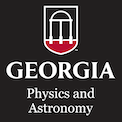Dr. Jack Huang of the University of Georgia Department of Crop and Soil Sciences, Griffin Campus, will be presenting his talk entitled "Phase Distribution of Solubilized Multiwall Carbon Nanotubes in Aqueous Systems Containing Solid Organic Matter" this week.
We are conducting research to investigate the environmental and ecological behavior of water-dispersed carbon nanotubes, including water-sediment phase distribution, possible degradation and food chain transport, thereby providing useful information for environmental risk assessment and potential waste treatment. To unambiguously identify and quantify carbon nanotubes from various natural materials including water, sediments and organisms, we use C14-labeled carbon nanotubes in our study. Previous studies indicate carbon nanotube uptake by organisms from soil/sediment media and from aqueous phase exhibited different behaviors. Thus, information on phase distribution between different environmental compartments is essential to risk assessment. We conducted experiments to examine phase distribution of C14 labeled multiwall carbon nanotubes (MWCNTs) in aqueous systems containing peat as a model organic solid phase under a series of varying pH and ionic strength conditions. Our results suggest that the solid phase distribution of water-dispersed MWCNTs tends to be governed by three interactive processes: i) dissolved cations tend to promote CNT aggregation via double layer compression; ii) dissolved organic matter released from the solid phase tends to stabilize CNTs dispersion via steric hindrance; and iii) CNTs sorb onto the solid phase. All processes are variously influenced by aqueous conditions (e.g. pH, electrolytes, dissolved organic matter) and their interplay governs the phase distribution of MWCNTs. We also characterized MWCNT length distribution by SEM before and after phase distribution. The results suggest that the shorter nanotubes (<300 nm) tend to be more readily removable from aqueous phase, likely because their higher specific surface areas promote aggregation and sorptive interactions on solid phase.


